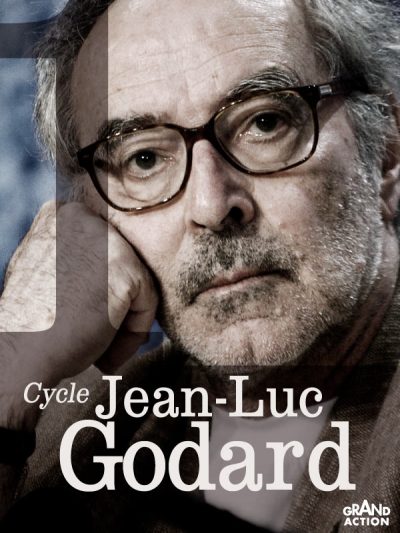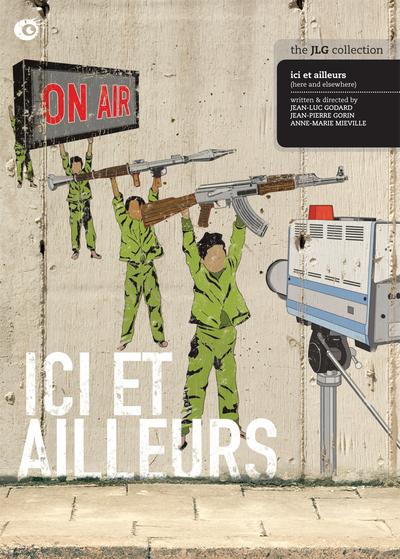Like its predecessor (De l’origine du XXIe siècle), The Old Place examines the role of art in history, only this time in still rather than moving images. Says Michael Althen of this piece, commissioned by the New York Museum of Modern Art in 1999, “[T]he aim is not to give an overview of art history but to cut a path through the forest by asking how art relates to reality and its horrors.” Throughout its mid-length duration, reflections on art and its traces cross swords with future-oriented impulses. The questions it poses are not meant to be answered, but taken as wholesale embodiments of cultural memory, which tends to account for reality via myths and legends. As in the opening image of a monkey dangling from a tree, it is dependent on the presence of gravity to give hierarchical sensibilities a grounding from which to suspend our inhibitions.Read More »
Anne-Marie Miéville
-
Jean-Luc Godard & Anne-Marie Miéville – The Old Place : Small Notes Regarding the Arts at Fall of 20th century (1998)
1991-2000ArthouseFranceJean-Luc Godard -
Jean-Luc Godard & Anne-Marie Miéville – Comment Ca Va? (1978)
1971-1980Anne-Marie MiévilleArthouseDocumentaryFranceJean-Luc Godard

A Jean-Luc Godard film about politics and the media, in which two workers in a newspaper plant attempt to make a film.Read More »
-
Anne-Marie Miéville – Nous sommes tous encore ici aka We’re All Still Here (1997)
1991-2000Anne-Marie MiévilleArthouseFrance
“In some ways more obscure and difficult than Jean-Luc Godard, with whom she has collaborated in various capacities since 1972, Anne-Marie Mieville continues to puzzle even as she sharpens her mise en scene. This 80-minute feature from 1997 is the most interesting solo effort of hers I’ve seen, though I’m not entirely sure what to make of it, especially during the third and final sequence. In the first and most impressive sequence, an extract from Plato’s Gorgias is dramatized inside a bourgeois household, with Callicles (Bernadette Lafont) performing various household chores as she quarrels with Socrates (Aurore Clement). In the second, Godard turns up on a theater stage to rehearse a monologue condensed from a passage in Hannah Arendt’s The Origins of Totalitarianism below a huge photograph of Arendt as a young woman, an image that recalls the opening of Bergman’s Persona.Read More »
-
Jean-Luc Godard – Le livre d’image AKA The Image Book (2018) (HD)
2011-2020ArthouseJean-Luc GodardSwitzerland
IMDB wrote:
Nothing but silence.
Nothing but a revolutionary song.
A story in five chapters like the five fingers of a hand.Read More » -
Jean-Luc Godard & Anne-Marie Miéville – Soft and Hard (1986)
1981-1990DocumentaryFranceJean-Luc GodardJean-Luc Godard and Anne-Marie MiévillePolitics
Jonathan Rosenbaum in the Chicago Reader wrote:
Soft and Hard (A Soft Conversation Between Two Friends on a Hard Subject)
Soft and Hard, a highly intimate 48-minute video made by Godard and Anne-Marie Mieville for English television three years later, shows Godard and Mieville at their home in rural Switzerland. In many ways the most intimate and domestic of Godard’s works, it broaches the matter of what distinguishes film from video. Can be viewed in retrospect as necessary preludes to his recently completed magnum opus, the eight-part Histoire(s) du cinema.Read More » -
Jean-Luc Godard & Anne-Marie Miéville – L’Enfance de l’Art (1993)
1991-2000FranceJean-Luc GodardJean-Luc Godard and Anne-Marie MiévilleShort FilmWar
A woman, a child, a man and another child, the noise of bombs falling and of planes passing by, in a urban landscape destroyed by war.
A man dies before he had time to write on the back of La liberté guidant le peuple de Delacroix: that could be the plot, just the enigma consisting of a missing word. A question opened before death, resolved by a child, the shadow and spirit of Gavroche.Read More » -
Jean-Luc Godard – Ici et ailleurs AKA Here and Elsewhere (1976)
1971-1980DocumentaryFranceJean-Luc GodardPolitics
Here and Elsewhere
Capsule by Jonathan Rosenbaum
From the Chicago ReaderJean-Luc Godard’s short feature about the PLO was initially shot with Jean-Pierre Gorin in the Middle East in 1970, but when he edited the footage with Anne-Marie Mieville several years later, many of the soldiers that had been filmed were dead. Reflecting on this fact, as well as on the problems of recording history and of making political statements on film, Godard and Mieville produced a thoughtful and provocative essay on the subject. Coming after the mainly arid reaches of Godard’s “Dziga Vertov Group” period (roughly 1968-1973), when his efforts were largely directed toward severing his relation with commercial filmmaking and toward forging new ways to “make films politically,” this film assimilates many of the lessons he learned without the posturing and masochism that marred much of his earlier work. The results are a rare form of lucidity and purity. All proportions guarded, it is a little bit like hearing John Coltrane’s “Blues for Bessie” after the preceding explorations of “Crescent” and “Wise One” on his Crescent album.Read More »
